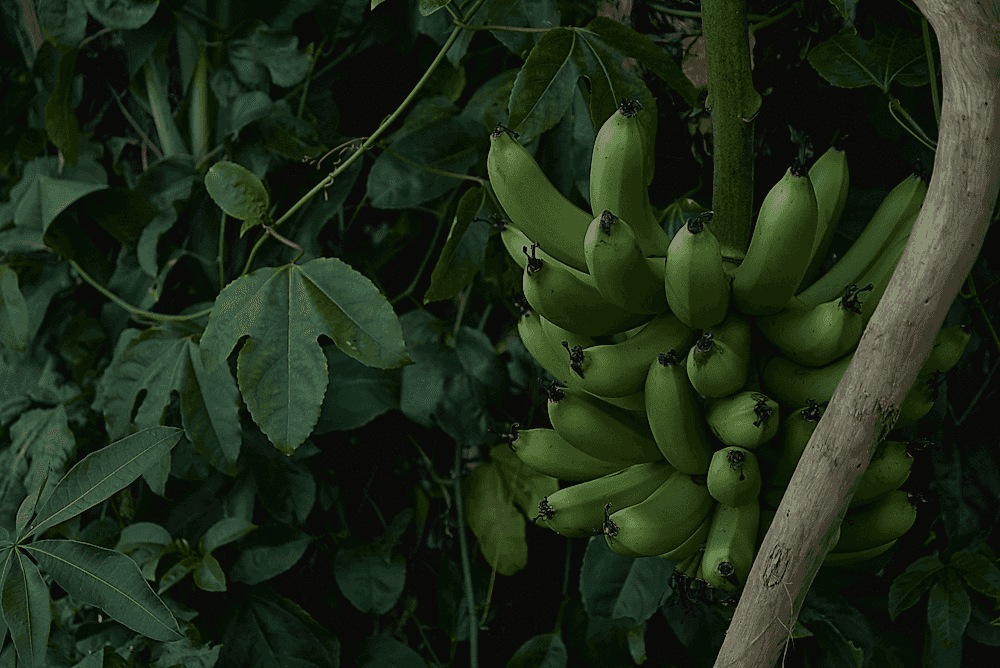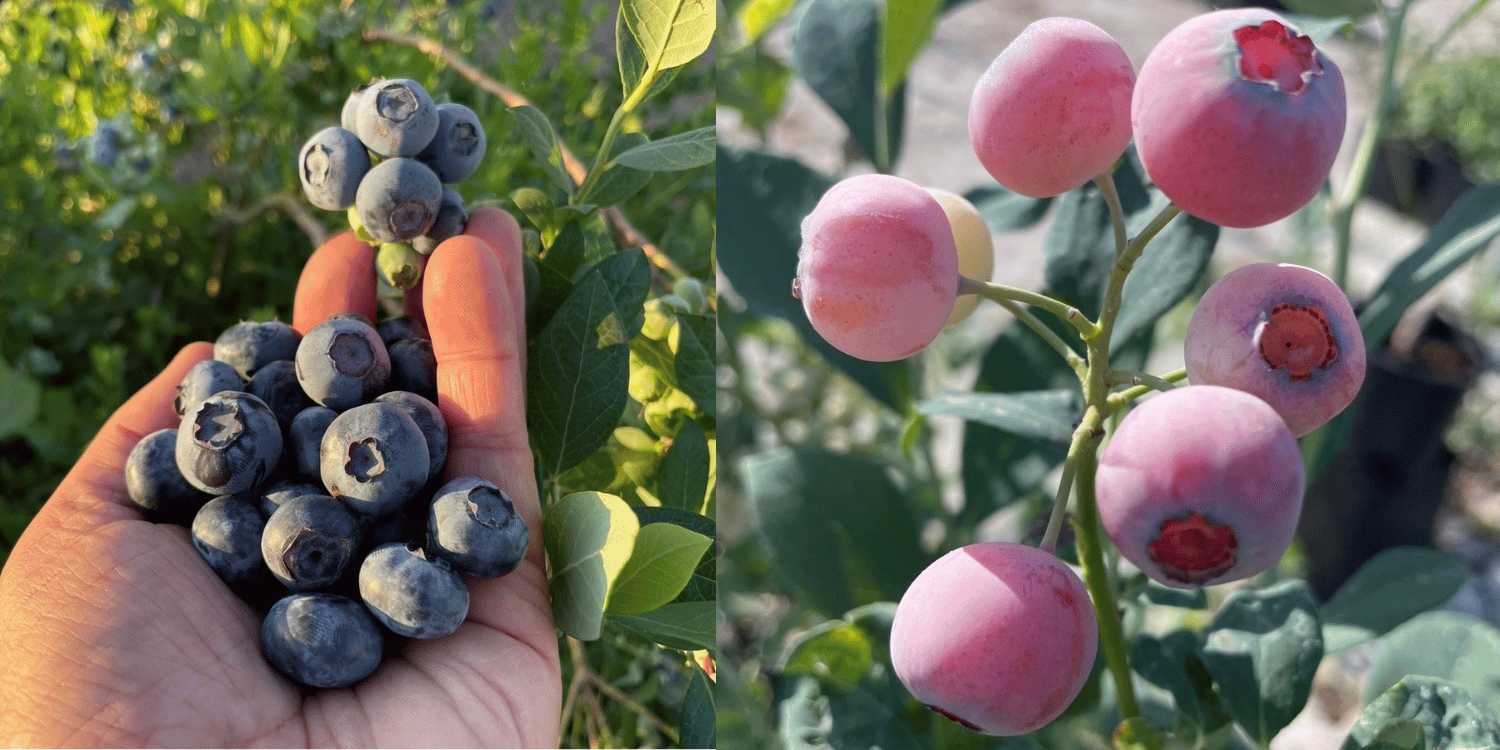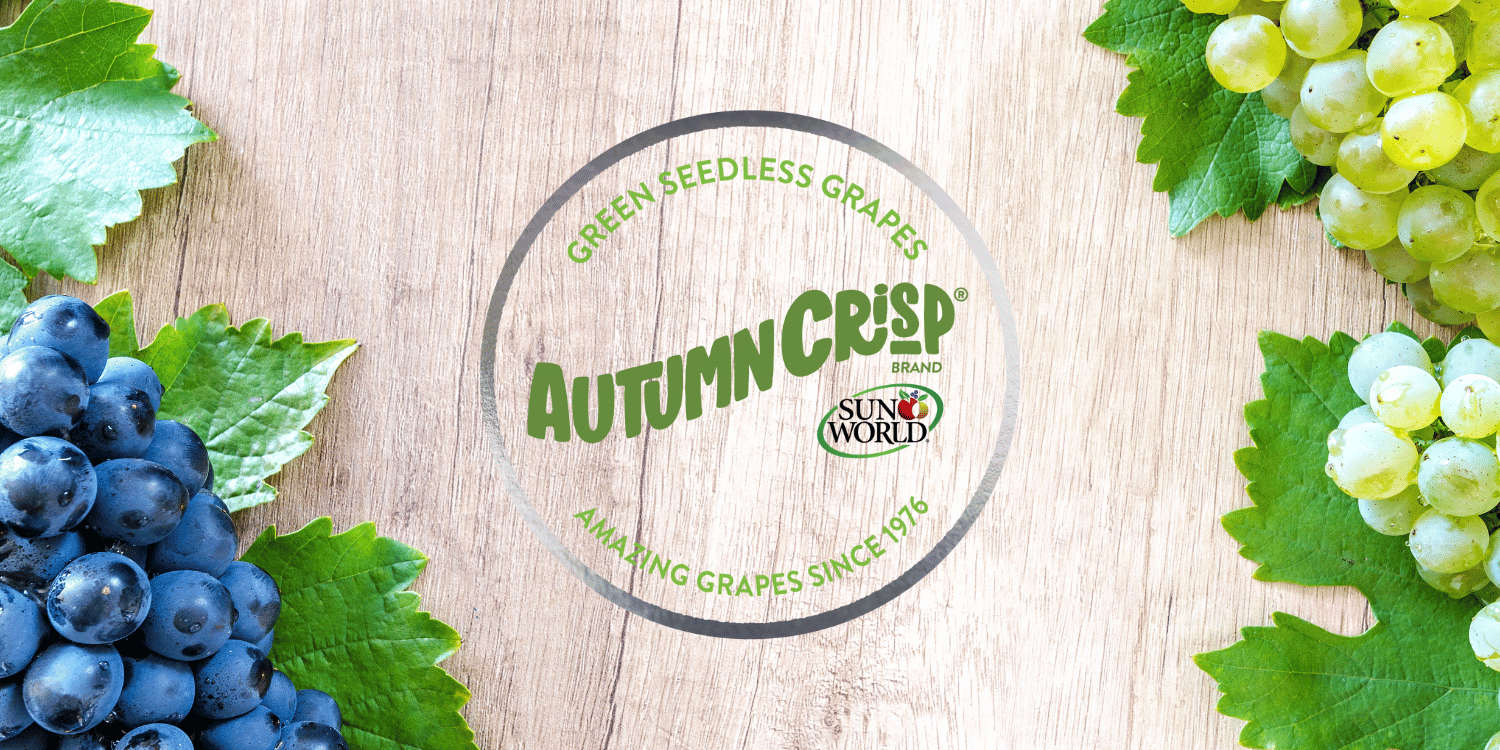Understanding the intricacies of agricultural import regulations is important for any international trading activity.
When dealing specifically with produce, like bananas, there are additional factors to consider.
Several steps must be adhered to, ranging from obtaining the proper permits to preparing for required inspections.
Moreover, working with U.S. Customs and Border Protection can seem daunting with its depth of bureaucratic processes.
However, with the correct guidance, this task can become less intimidating and more straightforward.
Throughout this article, we will dig in into these aspects to provide insightful advice, ensuring smooth and successful import transactions.
- Secure necessary import permits from USDA.
- Adhere to international trade agreements.
- Establish reliable cold supply chain logistics.
- Ensure bananas meet US pesticide standards.
- Follow US food safety regulations strictly.
While the key takeaways highlight the basic requirements of importing bananas into the United States, the spectrum of understanding the subject stretches far beyond that.
In the upcoming sections, it’s essential to continue because we are about to navigate through other crucial aspects like the challenges and market dynamics associated with importing bananas.
The complexity of the banana import market will be unraveled in intertwined segments, taking into account issues such as ethical sourcing, cost-effectiveness, and challenges in dealing with fresh produce.
Stick around, as we journey through the lessons and strategies from industry veterans, invaluable in treading through the intricate world of banana imports.
Contents
- Tips For Importing Bananas To The United States
- 1. Secure necessary import permits from USDA
- 2. Complying with International Trade Agreements
- 3. Arrange reliable cold supply chain logistics
- 4. Ensure Bananas Meet US Pesticide Standards
- 5. Comply with US Food Safety Regulations
- 6. Prepare for customs duties and taxes
- 7. Are bananas harvested at the right maturity?
- 8. Understand Phytosanitary Regulations for Plant Products
- 9. Arrange Shipment Inspection on Arrival
- 10. Stay Updated with US Import Requirement Changes
- The Bottom Line
Tips For Importing Bananas To The United States
1. Secure necessary import permits from USDA
In Short: Securing a USDA permit is essential for importing bananas into the U.S., demonstrating compliance with phytosanitary regulations and pest control measures. Importers must factor in the time-consuming application process, considering the requirements, potential pitfalls, and regular updates necessary to maintain validity.
One of the initial steps to break into the banana importing business is to secure necessary import permits from the United States Department of Agriculture (USDA).
The USDA, specifically the Animal and Plant Health Inspection Service (APHIS), is in charge of overseeing the imports of plant products including bananas into the U.S.
This body aims to prevent the entry and spread of pests and diseases that could harm the country’s agriculture and environment.
Therefore, obtaining an import permit from the USDA is to show compliance with its regulations and standards.
To obtain the permit, an application must be filed.
The application will require details such as your name, address and detailed description of the product to be imported.
Notably, the application process may take several weeks to complete, hence timing should be factored in your business plan.
It’s also worth noting that the permit might not be granted if the necessary conditions are not met.
Now, let’s dig in into some of the common reasons why a USDA permit might be denied:
- Non-compliance with phytosanitary regulations: Before bananas can be imported, they have to meet certain phytosanitary conditions in their country of origin.
- Lack of adequate pest risk analysis: Bananas, being a plant product, could harbor harmful foreign pests. A pest risk analysis evaluates the likelihood of this happening and how to mitigate the risk.
- Incomplete application documentation: Failing to provide all the necessary information during the application might result in denial of the permit.
As such, it is advisable to engage the services of experienced import agents or attorneys.
These professionals can guide you in navigating these regulatory complexities.
An approved USDA permit serves as a green light for importation, but does not; however, exempt you from other obligations.
Others obligations such as customs duties, inspections, and compliance with food safety regulations still apply.
Furthermore, it is essential to note that USDA import permits are not indefinite.
They typically have a validity period and must be renewed to continue importing bananas to the U.S.
To navigate this complexity, many importers opt to work with third-party firms that specialize in USDA compliance and permit applications.
Investing in the services of these firms can save you significant time and resources that can be better spent on other aspects of your import business.
Pro Tip: Obtaining a USDA import permit is a requisite step towards entering the banana importing business in the U.S and ensuring compliance with regulations and standards intended to thwart the introduction of harmful pests and diseases into the country.
In a nutshell, securing a USDA import permit is a requisite step that demonstrates a business’s commitment to following the prescribed rules and contributing to the prevention of risks associated with the importation of plant products.
Prudent businesses make a concerted effort in effectively navigating this important phase, and it is crucial to remember that this step in the process should not be taken lightly.
2. Complying with International Trade Agreements
In Short: Understanding and complying with international trade agreements like World Trade Organization’s rules, United Nations Convention on Contracts for the International Sale of Goods, Free Trade Agreements, and Bilateral Investment Treaties is vital when importing bananas into the United States. Knowledge of these agreements not only prevents violations and penalties but can also provide potential benefits and opportunities to lower costs and increase competitiveness for your import business.
When considering the import of bananas to the United States, understanding international trade agreements is critical.
These agreements act as guidelines for global commerce, governing the terms and conditions of transactions between countries.
For starters, the World Trade Organization (WTO) is an influential body that regulates international trade.
The WTO has set rules which ensure that trade flows between nations are conducted as smoothly, predictably and freely as possible.
Its core principle, the Most-Favoured-Nation (MFN) rule, obliges members to treat the imports of all other members equally, without discrimination.
Thus, as a banana importer, one must follow the agreements laid down by the WTO, as violating these can result in hefty fines and trade sanctions.
However, the world of trade agreements is complex and multilayered beyond the WTO alone.
In fact, here is a list of some other key international trade agreements that could affect your banana import business:
- United Nations Convention on Contracts for the International Sale of Goods (CISG): This treaty governs the sale of goods between different countries.
- Free Trade Agreements (FTAs): These agreements between two or more countries reduce, or eliminate, tariffs and quotas in order to encourage trade.
- Bilateral Investment Treaties (BITs): These agreements establish the terms and conditions for private investment by nationals and companies of one state in another state.
Each of these agreements has different rules and regulations that must be complied with.
However, it’s not just about knowing the agreements but understanding how they apply to your specific import business.
For instance, while the CISG generally applies to the sale of goods between parties based in different signatory states, the specific features of FTAs can vary depending on the countries involved.
Furthermore, understanding the details of various agreements can also provide potential benefits and opportunities for importers.
Pro Tip: To successfully import bananas to the United States, ensure your business understands and complies with relevant international trade agreements, including those set by the World Trade Organization, as well as others like the CISG, FTAs, and BITs, to avoid violations that could result in fines and increase competitiveness through potential benefits such as reduced tariffs.
For instance, importers may take advantage of reduced tariffs under certain FTAs to lower costs and increase competitiveness.
Recognition of the importance of complying with international trade agreements when importing bananas to the United States is therefore an essential aspect of any successful import operation.
3. Arrange reliable cold supply chain logistics
In Short: Securing reliable cold supply chain logistics is essential when importing bananas due to their perishability, requiring careful temperature control at all stages from harvest to distribution. It’s important to choose a reputable logistics partner and implement emerging technologies for real-time monitoring, while viewing the cost of establishing this as a necessary investment for maintaining quality and preventing financial loss.
When considering banana imports, one of the most critical points to focus on is arranging for reliable cold supply chain logistics.
This is important because bananas, being highly perishable products, require specific temperature conditions during shipping and storage to prevent premature ripening, decay, and overall quality degradation.
Securing a reliable cold supply chain, therefore, plays a huge role in ensuring successful importation of bananas.
When selecting a logistics partner, it’s essential to choose one with a proven track record of handling perishable items, particularly bananas, diligently.
They should have the necessary infrastructure and technologies in place to maintain the required temperatures at all stages of the transport process.
Moreover, they should be reputable in terms of delivering products on time and in excellent condition.
Emerging technologies like the Internet of Things (IoT) and Radio Frequency Identification (RFID) can assist in real-time monitoring of temperature, humidity, and other crucial parameters during the transit process.
An important aspect to remember in the process of arranging cold supply chain logistics are the different stages involved.
Here’s a list detailing a few of these stages:
- Growing and harvesting: Using modern agricultural practices to get the best yield.
- Post-harvest handling: From temperature-controlled storage at farms to carefully loading bananas onto transportation vessels.
- Transportation: Ensuring proper temperature control and handling during the travel phase.
- Distribution: Once arrived, it’s crucial to maintain the same careful handling and temperature control as products are distributed to various points of sale.
Another point to consider is the cost of arranging reliable cold supply chain logistics.
While this might seem like an additional financial burden, it should be seen as a necessary investment that ensures the imported bananas reach the market in top condition.
It’s also a good idea to review any potential contract with the logistics partner, focusing particularly on service level agreements (SLAs) to ensure they meet your requirements and expectations.
Remember that any disruption in the cold chain logistics can lead to deterioration in quality, loss of merchandise, and followingly, financial loss.
Finally, always remember that the success of your banana import largely depends on how well you manage the logistics and cold supply chain. Therefore, never compromise on this crucial aspect.
4. Ensure Bananas Meet US Pesticide Standards
In Short: To secure safe banana imports into the US, exporters must strictly adhere to the country’s comprehensive pesticide standards which include MRLs, import tolerance exemptions, and the Food Quality Protection Act. It’s crucial for them to monitor updates on these standards, work with growers to implement pesticide reducing practices such as IPM, and possibly consult with experts on US import regulations.
When it comes to importing bananas into the United States, it is crucial to ensure that they meet the stringent pesticide standards set by the country.
This responsibility majorly lies on the exporter who must ascertain that the bananas have been grown, harvested, and stored in conditions that reduce pesticide residue.
The objective here is to minimize the risk of pesticide contamination, ensuring that the final consumer isn’t exposed to potential health risks.
Illegal pesticide amounts not only jeopardize consumers’ health, but also may result in the importer being penalized, fined, or even given trading bans.
It is thus essential that every batch of bananas shipped into the US must be thoroughly inspected for pesticides.
It may come as a surprise that the United States has developed some specific standards that bananas must adhere to. These include:
- MRLs (Maximum Residue Limits): Set by the Environmental Protection Agency (EPA), these are the highest levels of pesticides allowed in bananas.
- Import Tolerance Exemptions: In some instances, the EPA provides tolerances for imported bananas, allowing a certain level of pesticide residues.
- Food Quality Protection Act (FQPA): Aims to protect consumers from the potential health hazards of pesticides. It accounts for the cumulative effects of pesticides among other factors.
Before exporting bananas, it’s important to familiarize oneself with these definitions to ensure compliance.
It’s also advisable for the exporter to work closely with the banana growers to encourage practices that reduce pesticide use.
These might include methods such as Integrated Pest Management (IPM), which minimizes pesticide use and promotes environmentally friendly farming practices.
Furthermore, it can be beneficial to engage the services of an experienced agent or firm that specializes in US import regulations.
Such an entity could assist in understanding the complexities of the US pesticide standards, thus ensuring you remain compliant while minimizing importing risks.
Finally, it’s essential to keep abreast with any revisions or updates to these standards. This will ensure that your imported bananas always meet the current US standards.
5. Comply with US Food Safety Regulations
In Short: Complying with US food safety regulations, such as the FDA’s rules on food importation and the Food Safety Modernization Act, is crucial for importing bananas to the US. Non-compliance can result in fines, seized goods, or import license cancellation, while proper labeling and record-keeping can foster consumer trust and prevent customs issues.
As an important part of the importation process, understanding and complying with US food safety regulations is of significant importance.
These are regulations put in place to guarantee the safety of food products entering the country.
Non-compliance with these regulations could result in hefty fines, the seizure of your goods, or even the cancellation of your import license.
Therefore, utmost care should be taken to ensure that the bananas you are importing meet all safety standards.
These standards handle various aspects of food safety, among them is the handling, storage, and transportation of your bananas.
Here are a few important points to consider under the US food safety regulations.
- Familiarize yourself with the FDA’s rules on food importation
- Understand the Food Safety Modernization Act (FSMA)
- Ensure your bananas are properly labeled as per FDA requirements
- Commit to regular audits and inspections by the FDA
- Keep records of every step in your supply chain, from harvest to packaging and transportation
Thoroughly understanding the Food and Drug Administration’s (FDA) rules on food importation is an essential starting point.
These rules often cover matters like the use of approved pesticides, conditions during shipping, and labeling requirements among others.
The Food Safety Modernization Act (FSMA), enacted in 2011, is another particularity importers should acquaint themselves with.
Ensuring that your bananas are properly labeled according to mandate from FDA rules will save you from possible complications during customs checks.
It is also crucial to keep the FDA informed about your supply chain. This involves availing your records on demand and allowing the FDA to conduct random audits.
Audit records of your supply chain, not only fortify your compliance but also foster consumer trust in your products.
Hence, it’s noteworthy to say that complying with US food safety regulations is not an option, but a mandatory requirement when importing bananas to the US.
Going through the extra mile of guaranteeing compliance will not only save you from unnecessary hurdles but also secure your trade in the long run.
6. Prepare for customs duties and taxes
In Short: Importing bananas into the US involves understanding customs duties and taxes, including filing the correct Importer Security Filing, obtaining a Customs Bond, and dealing with potential costs. The customs process encompasses the value, origin, and type of goods and using a customs broker and tax professional can streamline this process, preventing legal and financial issues.
Importing bananas into the United States implies dealing with pertinent customs duties and taxes. Understandingably, this may seem bewildering for newcomers in the importation business, but these fees are a critical part of the process.
While bananas specifically are duty-free under the Harmonized Tariff Schedule (HTS) of the United States, importers should not equivocate this with the notion of not having to deal with customs at all. There are other potential costs and criteria to meet.
A good example would be, all customs entries must be accompanied by evidence that the correct Importer Security Filing (“ISF”) has been submitted. Failure to file a ISF can lead to hefty fines.
Ensure that you have a Customs Bond. This is a contract used for guaranteeing that a specific obligation will be fulfilled between customs and an importer for any given import transaction. This bond is required by Customs for all import transaction in US.
It is important to note that, in the context of importing goods, ‘duty’ refers to the tax imposed by customs on imports. In the United States, customs duties vary depending on the type of goods, their value and the country from where they have been shipped.
Let me edify you on the elements that you must reckon with when preparing for customs duties and taxes:
- Value of goods: The customs duty is calculated as a percentage of the price paid for the goods. The percent will vary based on the HTS code.
- Origin of goods: This affects the duty rate. Some countries have preferential trade agreements with the US, which could result in lower duty rates.
- Type of goods: Certain goods may be part of a duty-free category, such as bananas, but have different treatment within the category based on specific factors.
Also, customs uses ASYCUDA system, the Automated System for Customs Data, to calculate customs duties. It’s essential to have a fine understanding of this process.
The fact is that for all this complicated customs process, having a customs broker will be significantly beneficial. These professionals guide importers through the complex customs clearance process and help ensure duties and taxes are paid accurately and promptly.
Also, consider seeking the advice of a tax professional knowledgeable about international trade. Tax laws and tariffs are multifaceted, and failing to comply can result in hefty sanctions. Tax professionals can provide advice tailored specifically to your business and the products you’re importing.
I want you to remember, non-compliance with customs duties and taxes doesn’t mark the end of your importing endeavor. Rather, it marks the beginning of potential legal and financial complications that could erode your profit margins or even jeopardize your business entirely.
Therefore, it’s critical to have clarity and mindfulness on how to navigate the nuances of customs duties and taxes. Your due diligence in this area could contribute significantly to your business’s sustainability and success in importing bananas to the United States.
7. Are bananas harvested at the right maturity?
In Short: Bananas for import are carefully harvested at the correct maturity stage to ensure quality, as these fruits continue to ripen after harvest. The ‘degrees of ripeness,’ a scale from 1 to 7, is used globally to ensure bananas reach consumers at the optimum stage, usually stage 4, balancing sweetness and aroma.
Importing bananas to the United States requires meticulous adherence to many guidelines, one of which is assuring that the bananas are harvested at the right maturity. The ripening process of bananas plays a critical factor in their quality once they reach the consumers.
First and foremost, bananas that are harvested prematurely are more susceptible to physical damage and are more likely to develop an uneven flavor and poor texture. On the other hand, bananas harvested too late will ripen too quickly and are likely to spoil before they reach the consumer.
This is where understanding the concept of the ‘degrees of ripeness’ comes into play. It is a measure, rated from 1 to 7, that is used worldwide to assess the stage of ripeness of bananas. It has direct effects on the flavor, texture, and overall acceptability of the bananas among consumers.
It is important to present a quick understanding of the banana harvest and the degrees of ripeness.
- Stage 1 (Green): Bananas are hard and tasteless.
- Stage 2 (Blotchy Green): Slightly softer, but still not ideal for consumption.
- Stage 3 (More Yellow than Green): Bananas start developing their characteristic sweet taste at this stage.
- Stage 4 (Yellow): This is the peak banana ripeness stage where the sweetness and aroma are at their highest.
- Stage 5 (Yellow with brown spots): Still consumable with an increased sweetness.
- Stage 6 (Brown): Taste starts to deteriorate.
- Stage 7 (Black): At this stage, bananas are overripe, and the flavor starts to turn sour.
For commercial purposes, bananas are usually harvested between stage 2 and 3. By doing so, it allows ample time for transportation, and other import processes, before they reach stage 4, which is the ideal stage for consumers.
One distinguishing characteristic of banana maturation is that it continues uninterruptedly after harvest, unlike other fruits. Consequently, if bananas are harvested at the wrong time, they could reach the consumer at a stage of ripeness that isn’t ideal.
Bananas harvested too early can be a challenge as they may never fully ripen, thus coming out with an unsatisfactory flavor and texture that wouldn’t satisfy the consumer. Alternatively, if harvested too late, bananas may become overly ripe or spoil before they reach the marketplace.
Important: Understanding the correct harvesting stage of bananas is crucial to the success of an importing business as it significantly influences market acceptance and the importer’s return on investment, and bananas are usually harvested between stage 2 and 3 to allow ample time for transportation and other import processes before they reach the ideal stage 4 for consumers.
Thus, for a successful import process and to satisfy consumers, getting the timing right on banana harvest is absolutely crucial. It ensures the bananas will reach the market at just the right level of ripeness, making them more appealing to customers and reducing the amount of product loss due to spoilage.
As we all know, understanding the correct harvesting stage of bananas can contribute immensely to the success of an importing business. It’s a important aspect of the import process that can significantly influence market acceptance and, by extension, the importer’s return on investment.
8. Understand Phytosanitary Regulations for Plant Products
In Short: Understanding and complying with phytosanitary regulations is crucial when importing bananas into the U.S to prevent harmful pests and diseases. These regulations, enforced by USDA and overseen by bodies like the IPPC, involve plant quarantine procedures, pest risk analysis, post-entry quarantine, and obtaining phytosanitary certificates, with non-compliance leading to potential delays and additional costs.
While importing bananas into the United States, one must not underestimate the importance of understanding phytosanitary regulations for plant products.
The International Plant Protection Convention (IPPC) provides a universally recognized set of phytosanitary standards to ensure the smooth and safe trade of plant products.
The United States Department of Agriculture (USDA) takes these regulations seriously and it is incumbent on the banana importer to be compliant.
Failure to comprehend and master these rules and guidelines can result in substantial delays and additional costs during the importation process.
All bananas imported into the United States must undergo phytosanitary inspections both in the country of origin and upon arrival to ensure they are free from quarantine pests and diseases.
Phytosanitary certificates, issued by the appropriate governing bodies in the exporting country, must accompany the banana shipments.
This document verifies that the bananas have been grown, harvested, and treated in accordance with the approved phytosanitary practices.
While this may seem overwhelming, there are a few key areas of focus to consider when trying to understand and comply with plant phytosanitary regulations.
Here are some principal aspects to keep in mind:
- Plant quarantine procedures: This includes restrictions on importing certain plant products from particular regions worldwide to prevent the introduction and establishment of non-native pests.
- Pest risk analysis: It evaluates the risk associated with importing plant products infested with pests not present or widespread in the US.
- Post-entry quarantine: Sometimes, plants are required to grow in quarantine facilities upon entry to monitor their growth and detect any pests or diseases.
- Use of phytosanitary certificates: Issued by the exporting country, this document attests the compliance of the consignment with US phytosanitary import requirements.
Keeping yourself abreast with any changes in phytosanitary regulations is essential as they evolve over time in response to new scientific findings, introduction of novel pests or changes in trade patterns.
Accessing the right information can often be a challenge, but resources like the USDA’s Animal and Plant Health Inspection Service (APHIS) can facilitate this process.
They provide a comprehensive guide to phytosanitary regulations and an updated list of plants and plant products with their corresponding import regulations.
Beyond the emails, internet searches, and paperwork, some forward-thinking importers engage the services of specialist consultancy firms.
These experts shoulder the responsibility of maintaining compliance with phytosanitary measures, freeing the importers to focus more on their primary business tasks.
Finally, it is always helpful to build a good relationship with your local agriculture department or the designated plant protection authorities.
They are the most immediate and reliable source for phytosanitary information and can guide you through the complexities of the process.
I want you to remember, understanding and complying with phytosanitary measures ensures not only seamless importation but also contributes to the global fight against the spread of harmful pests and diseases in agricultural produce.
9. Arrange Shipment Inspection on Arrival
In Short: Arranging a seamless shipment inspection on arrival is a critical part of importing bananas into the U.S, with the goods subject to checks by the U.S. Customs and Border Protection (CBP). The process can be made smoother with adequate preparation, transparent communication, a comprehensive inventory, and engagement from a licensed customs broker.
The process of importing bananas into the United States not only requires meticulous planning from the point of sourcing but also extends to the moment the shipment arrives on American soil. Ensuring a seamless shipment inspection on arrival is an imperative step in the process.
Arranging a shipment inspection on arrival can be somewhat complicated. However, understanding and implementing the appropriate protocols can ease the process tremendously.
One of the primary aspects to consider is the fact that all imported goods, including bananas, are subject to inspection by the U.S. Customs and Border Protection (CBP). This is to verify that the import is compliant with U.S. laws and regulations.
In order to prepare for this inspection, your shipment must be adequately marked and numbered. This enhances the efficiency and effectiveness of the inspection, in turn expediting the process.
Many importers find it advantageous to have a designated licensed customs broker who can help with the necessary paperwork and communications with CBP. Owing to their extensive experience and understanding of the requirements, they can make the process smoother.
Next, an essential aspect that one must consider while arranging the shipment inspection is to compile an accurate and complete inventory of the goods being imported. This list can be instrumental for a successful inspection as it helps the inspectors have a thorough understanding of the incoming items.
Also, it is crucial to maintain transparent communication with the inspection teams to foster a smooth, clear-cut examination with minimal interruptions or delays.
Further, here are few suggestions that could be beneficial while arranging the shipment inspection:
- Make sure to have all required documents at hand, such as the bill of lading, packing list, commercial invoice, etc.
- Maintain clear records of all communication and transactions with inspection teams and relevant authorities.
- Ensure to provide adequate facilities for the inspection at the arrival point.
The responsibility for establishing an efficient inspection doesn’t lie solely on the importer. CBP also plays a significant role in conducting a thorough examination that can assure the plant health and food safety status of the downloaded bananas. A key factor here includes the CBP’s ability to search for plant pests that might not be visually detectable.
In the case of bananas, additional inspections may be necessary to confirm the maturity and freshness of the produce. Such inspections are often carried out by the United States Department of Agriculture (USDA).
Pro Tip: To ensure a successful shipment inspection on arrival, prepare all required documents, maintain a detailed inventory, follow U.S. laws and regulations, and consider hiring a licensed customs broker for smooth communication with the U.S. Customs and Border Protection.
To successfully pass these inspections and assure that the bananas are fit for consumption, the importers should pay heed to the USDA guidelines and ensure their produce meets all required standards.
Aligning with these inspection guidelines will smoothen out the inspection process. However, it’s also important to note and accept that every import process might come with its own set of challenges. The key is to stay prepared and patient through the procedures. In the end, successful shipment inspection ensures that only the safest and highest quality bananas reach the U.S. market.
10. Stay Updated with US Import Requirement Changes
In Short: Staying informed about changes to US import regulations is crucial for banana importers to avoid non-compliance and shipment delays. Importers can achieve this by subscribing to USDA updates, networking within the industry, joining trade associations, attending industry conferences, subscribing to trade publications, following relevant government agencies on social media, and hiring a customs broker.
As an importer of bananas to the United States, staying informed about changes in import requirements is important. The US import regulations are very dynamic and can change according to different conditions ranging from security measures to trade policies.
If you fail to stay abreast with these changes, you might end up facing losses due to non-compliance or delay in shipment. This underscores the importance of staying updated with the regulatory framework governing your trade.
One significant avenue to stay informed about changes in US import requirements is by subscribing to updates from the USDA. The USDA is the primary authority in charge of agricultural imports including bananas and other fruits, hence they are most likely to provide first-hand updates with regards to any changes in regulations.
Furthermore, consulting with experts in import and export business is another useful method. This allows you to gain insight from other people’s experiences and stay ahead of possible changes in regulations. Clearly, networking within the industry can prove highly beneficial.
Before suggesting a few other concrete ways to stay abreast of changes, it’s important to note that maintaining awareness of regulatory adjustments isn’t merely a smart business habit—it’s also an essential part of maintaining ethical and effectively sustainable practices.
The list of strategies below provides a rundown of some of the more effective ways of keeping up with US import requirement changes:
- Join trade associations: These organizations often have resources and communication channels dedicated to keeping their members informed about changes in import requirements.
- Participate in industry conferences: This not only opens up opportunities for networking but also gives you the chance to learn from experts during different sessions.
- Subscribe to trade publication: These include magazines, newsletters, and blogs that cover updates in the import-export industry.
- Follow relevant government agencies on social media: Many agencies post regular updates about changes in regulations on their social media platforms.
- Hire a customs broker: These professionals handle the import and export process for you and can be very useful in navigating changes in import requirements.
Each of these sources provides its form of value and complements others by providing different angles of the ecosystem of international trades, hence enabling you to gain a holistic understanding of the changes.
Staying updated with changes in US import requirements is a continuous process that will essentially save you both time and money in the long run. While it may seem tedious, its uttermost importance cannot be downplayed, and as such, it should be a priority for every business involved in the importation of bananas into the United States.
As we all know, keeping up with the changing landscape of importation requirements can prove to be a pivotal part of your business strategy. With the ever-evolving global trade scene, being adaptable and receptive to changes in regulations can put your banana import business in a strong position for growth and profitability.
The Bottom Line
Navigating the complexities of banana importing to the United States can initially seem daunting yet achievable with proper planning.
Following these practical tips, involving understanding regulations, building the right partnerships, and investing in quality control, can significantly streamline the process.
By acknowledging the considerations unique to this sector, from environmental guidelines to ethical sourcing, you set yourself ahead in this competitive industry.
In the end, strategic preparation and careful adherence to both domestic and international standards are key to a successful banana importing business.




















